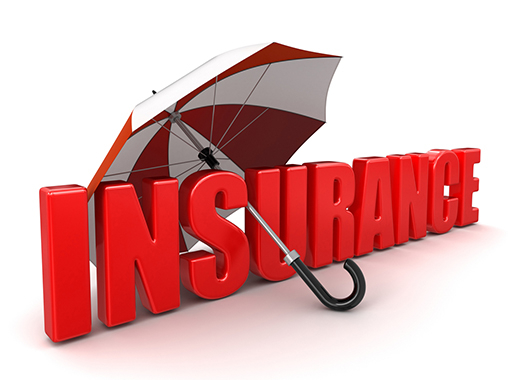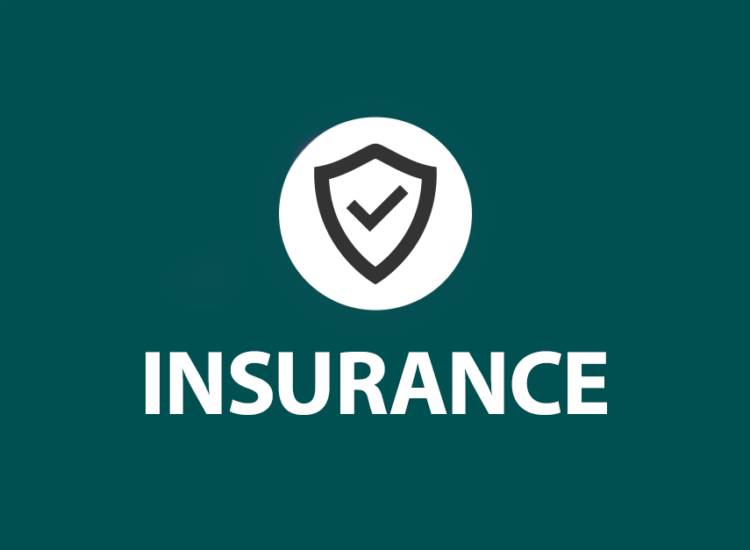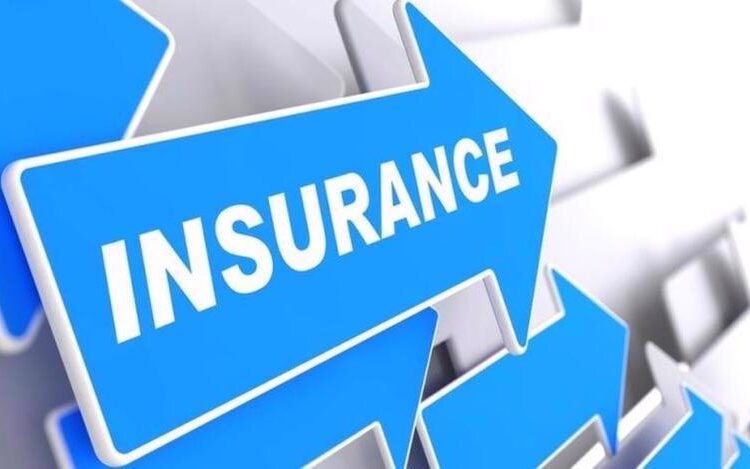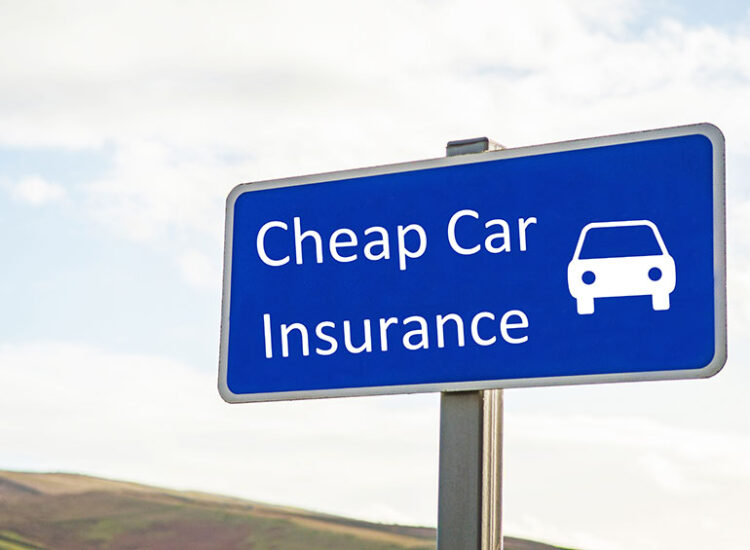Securing affordable car insurance can be a substantial financial burden for many drivers, especially those with poor credit or a history of accidents. High premiums often arise from these factors, leaving individuals feeling unfairly penalized. Car insurance reviews serve as a crucial resource for navigating this complex landscape and identifying better rates. Understanding these reviews is key to making informed decisions about coverage.
Toc
- 1. Understanding the Impact of Poor Credit and Accident History
- 2. Decoding Car Insurance Quotes and Comparing Options
- 3. Top Car Insurance Companies for Drivers with Poor Credit
- 4. Related articles 01:
- 5. Leveraging Car Insurance Reviews and Ratings
- 6. Emerging Trends in Car Insurance
- 7. Strategies for Securing Better Car Insurance Rates
- 8. Related articles 02:
- 9. Selecting the Right Car Insurance Company: Key Considerations
- 10. Top 10 Car Insurance Companies in the USA for High-Risk Drivers
- 11. Conclusion

In this article, we will delve into the significance of car insurance reviews, the impact of poor credit and accident history on premiums, how to decode car insurance quotes, and identify the best car insurance companies for high-risk drivers. Additionally, we will provide strategies for securing better insurance rates and selecting the right car insurance company tailored to individual needs.
Understanding the Impact of Poor Credit and Accident History
How Credit Scores and Driving Records Influence Insurance Premiums
When it comes to car insurance, credit scores and driving records are pivotal in determining premiums. Insurance companies assess risk based on various factors, and a low credit score often leads to higher premiums. This correlation exists because data indicates that individuals with poor credit are statistically more likely to file claims. Similarly, a history of accidents suggests a higher likelihood of future incidents, prompting insurers to raise rates for these drivers.
Insurers use credit-based insurance scores that combine information from traditional credit reports with additional data to assess the risk posed by potential policyholders. The specific weighting of credit and driving history varies by insurer and state, as outlined by the National Association of Insurance Commissioners (NAIC). This variability underscores the importance of understanding state-specific regulations when seeking car insurance.
The Emotional Toll of High Premiums
The burden of high car insurance premiums can take a significant emotional toll on individuals, particularly those who feel judged for past financial mistakes or driving errors. Many drivers experience anxiety and frustration while trying to find suitable coverage, often feeling unfairly targeted by insurance companies. Acknowledging this emotional impact is essential, as it highlights the need for drivers to explore all available options for securing better rates.
Resources to Improve Credit Score and Driving Record
Improving one’s credit score and driving record can substantially affect insurance premiums. Various resources are available to assist individuals in boosting their credit, such as financial counseling services, credit monitoring tools, and educational resources that provide tips on managing debt. Additionally, drivers can enhance their driving records by attending defensive driving courses, avoiding traffic violations, and maintaining a clean driving history.
Decoding Car Insurance Quotes and Comparing Options
Key Car Insurance Terms Defined
Understanding the components of car insurance quotes is crucial for making informed decisions. Here are some key terms to know:
- Liability Coverage: Typically required by law, this coverage addresses damages to other parties if the insured is found at fault in an accident. It includes bodily injury liability and property damage liability.
- Collision Coverage: This type of coverage protects against damages to the insured’s vehicle resulting from a collision, regardless of fault.
- Comprehensive Coverage: This coverage applies to non-collision-related incidents, such as theft, vandalism, or natural disasters. It provides broader protection for the insured vehicle.
- Deductible: The deductible is the amount policyholders must pay out-of-pocket before their insurance coverage takes effect. Choosing a higher deductible can lower premium costs but also increases out-of-pocket expenses in the event of a claim.
The Importance of Comparing Quotes Based on Identical Coverage Levels
When searching for car insurance, comparing quotes can be overwhelming. However, it’s essential to ensure that comparisons are made based on identical coverage levels rather than just the quoted prices. A seemingly cheap policy may lack essential coverage, leading to inadequate protection in the event of an accident. Therefore, creating a comparison chart that outlines coverage types, deductibles, and premiums from various insurers can help drivers make apples-to-apples comparisons.
Understanding Liability Limits and Their Implications

Liability limits are critical components of car insurance policies that can significantly affect drivers’ financial protection. Common formats for these limits are expressed as three numbers, such as 100/300/100 or 250/500/250. The first number represents the maximum amount paid for bodily injury per person, the second number indicates the maximum amount paid for bodily injury per accident, and the third number reflects the maximum amount for property damage per accident.
For example, if a driver has a liability limit of 100/300/100 and is involved in an accident where they are at fault, the insurer will pay up to $100,000 for each injured party (up to a total of $300,000 for all injured parties) and $100,000 for any property damage incurred. If the damages exceed these limits, the driver may be personally responsible for the additional costs, potentially leading to significant financial vulnerability. Understanding these limits and selecting appropriate coverage is vital for protecting oneself against unforeseen financial liabilities.
Tips for Effectively Comparing Quotes
- Gather Multiple Quotes: Request quotes from several insurance companies to gain a comprehensive view of available options. Many insurers offer online quote tools for convenience.
- Use a Comparison Chart: Organize the quotes in a comparison chart that outlines the coverage levels, deductibles, and premiums. This visual representation makes it easier to identify the best options.
- Evaluate Discounts: Look for discounts that may apply to your situation, such as multi-car discounts, good student discounts, or safe driving discounts. These can significantly lower your premium.
- Read the Fine Print: Ensure you understand the terms and conditions of each policy. Pay attention to coverage limits, exclusions, and additional fees that may apply.
Top Car Insurance Companies for Drivers with Poor Credit
For drivers classified as high-risk due to poor credit or accident history, certain insurers are known for being more accommodating. Below is a list of some of the best car insurance companies that cater to high-risk drivers, along with insights into their strengths, weaknesses, and average rate increases for high-risk drivers compared to average drivers.
1. Geico
Geico is renowned for its affordability and numerous discount opportunities, making it a popular choice for high-risk drivers. The company offers competitive premiums and a user-friendly online platform for managing policies. However, it has fewer in-person locations, which may be a drawback for some consumers. On average, high-risk drivers may see a rate increase of about 10-20% compared to average drivers.
2. Allstate
Allstate boasts an extensive agent network and various programs designed for young drivers. It provides several options for individuals with credit issues, but it has received a significant number of customer complaints regarding claims processing and service. High-risk drivers can expect an average rate increase of 15-25% compared to average drivers.
2. https://xedap-merida.com/mmoga-cheap-car-insurance-arkansas-a-comprehensive-guide/
3. https://xedap-merida.com/mmoga-best-car-insurance-in-illinois-for-young-drivers/
4. https://xedap-merida.com/mmoga-cheap-car-insurance-wv-a-comprehensive-guide-for-young-drivers/
5. https://xedap-merida.com/mmoga-best-car-insurance-for-seniors-a-comprehensive-guide/
3. Progressive
Progressive is known for its innovative tools, such as the “Name Your Price” feature and usage-based programs like Snapshot. These offerings cater to drivers seeking flexible insurance solutions. However, customer service ratings can be a concern, with some policyholders reporting dissatisfaction. High-risk drivers may experience rate increases of 10-30% compared to average drivers.
4. Farmers Insurance
Farmers Insurance has garnered attention for its comprehensive offerings and customer service. It provides a range of coverage options suitable for drivers with poor credit and accident histories. However, some reviews indicate that its rates may be higher than those of other insurers. On average, high-risk drivers might see a rate increase of 20-30%.
5. State Farm
State Farm is one of the largest insurers in the USA, known for its broad agent network and various discounts. It offers flexibility and options for policyholders, but its rates may not be as competitive for high-risk drivers. High-risk drivers can anticipate a rate increase of about 15-20% compared to average drivers.
6. USAA
Exclusively available to military personnel and their families, USAA is recognized for its competitive rates and excellent customer service. However, its availability is limited, which may exclude many potential policyholders. High-risk drivers generally see lower increases, around 5-15%, compared to average drivers.
7. Travelers
Travelers is noted for its customizable policies and easy claims process. It supports drivers looking for tailored coverage and often provides discounts for bundling policies. High-risk drivers may experience average rate increases of 15-25%.
8. Amica
Amica is recognized for superior customer service and offers a variety of coverage options and discounts for policyholders. It has a strong reputation for customer satisfaction, which is a significant factor for many drivers. High-risk drivers may see an average rate increase of 10-20%.
9. Nationwide
Nationwide appeals to drivers seeking personalized insurance solutions, offering low-mileage discounts and flexible plans. It has a solid reputation but may not always provide the lowest rates for high-risk drivers. Average rate increases for high-risk drivers can range from 15-25%.
10. Erie Insurance
Although limited to specific states, Erie Insurance is praised for its customer service and attractive coverage options. It often ranks highly in customer satisfaction surveys. High-risk drivers may face rate increases of about 10-20%.
Leveraging Car Insurance Reviews and Ratings

The Importance of Online Reviews and Ratings
In today’s digital age, car insurance reviews are an invaluable resource for evaluating insurance companies. Platforms like J.D. Power and the National Association of Insurance Commissioners (NAIC) provide ratings that reflect insurers’ reliability, customer service, and claims processing efficiency. By reading reviews and assessing ratings, drivers can gain valuable insights into the experiences of others, aiding in informed decision-making.
Analyzing Consumer Reports
Independent sources, such as Consumer Reports, offer in-depth analyses of car insurance companies. These reports reveal patterns regarding customer satisfaction, claims handling, and overall service quality. Drivers should take the time to interpret these findings to identify companies that align with their needs and expectations.
Farmers Insurance Review
Farmers Insurance is often highlighted in discussions about car insurance reviews, especially for drivers with poor credit and accident histories. Reviews frequently emphasize the company’s comprehensive offerings and customer service. While it provides a range of coverage options, some reviews indicate that its rates may be higher than those of other insurers. Analyzing specific reviews can provide a clearer picture of what to expect from Farmers Insurance, helping potential policyholders weigh the pros and cons.
Best Car Insurance Reviews and Ratings in California
California has a diverse insurance market, and understanding the best options available for drivers with poor credit is essential. Various insurers have emerged as top-rated choices, offering competitive rates and favorable terms. By examining reviews and ratings specific to California, drivers can identify which companies are best suited to meet their unique needs.
Emerging Trends in Car Insurance
The car insurance industry is continually evolving, with several emerging trends shaping the way consumers interact with insurers. One notable trend is the increasing adoption of usage-based insurance (UBI) programs, which allow insurers to personalize premiums based on actual driving behavior through telematics data. These programs can reward safe driving habits with reduced premiums, making insurance more affordable for conscientious drivers.
However, the rise of UBI also raises potential privacy concerns, as some drivers may be apprehensive about sharing their driving data with insurers. Regulatory efforts are being made to address these concerns and ensure that drivers are aware of how their data is used and protected.
Strategies for Securing Better Car Insurance Rates
Improving Your Credit Score
One of the most effective ways to lower car insurance premiums is by improving your credit score. Several actionable steps can help individuals enhance their credit profiles:
1. https://xedap-merida.com/mmoga-best-car-insurance-in-illinois-for-young-drivers/
3. https://xedap-merida.com/mmoga-cheap-car-insurance-wv-a-comprehensive-guide-for-young-drivers/
4. https://xedap-merida.com/mmoga-cheap-car-insurance-arkansas-a-comprehensive-guide/
5. https://xedap-merida.com/mmoga-best-car-insurance-for-seniors-a-comprehensive-guide/
- Pay Bills on Time: Consistently paying bills on time can have a positive impact on credit scores. Set reminders or automate payments to avoid late fees.
- Reduce Outstanding Debts: Work on paying down credit card balances and other debts. Lowering your credit utilization ratio can improve your credit score.
- Regularly Monitor Credit Reports: Check credit reports for errors or inaccuracies and dispute any discrepancies. Monitoring your credit can help you stay informed about your financial health.
- Limit New Credit Applications: Avoid applying for multiple new credit accounts within a short period, as this can negatively affect your credit score.
Counterargument: It’s important to note that some insurers may still use credit scores even after improvement, and the impact of a better score might be minimal in certain cases, depending on the insurer’s policies.
Defensive Driving Courses
Completing a defensive driving course can enhance driving skills and lead to insurance discounts. Many insurers offer lower premiums to individuals who demonstrate a commitment to safe driving practices. By taking such courses, drivers can showcase their dedication to reducing risks on the road, potentially resulting in significant savings on their insurance premiums.
Counterargument: However, the discounts offered for defensive driving courses vary widely among insurers and may not always offset the cost of the course itself, making it crucial for drivers to assess the value of such programs.
Bundling Insurance Policies
Bundling car insurance with other types of insurance, such as homeowners or renters insurance, can yield significant savings. Many insurers provide discounts for bundling policies, making it a cost-effective strategy for individuals looking to lower their overall insurance expenses. Be sure to ask about available bundling options when obtaining quotes.
Exploring Usage-Based Insurance
Usage-based insurance programs, like Progressive’s Snapshot or Nationwide’s SmartRide, reward safe driving habits with reduced premiums. These programs allow insurers to track driving behavior through telematics, offering personalized rates based on actual driving practices. For safe drivers, this can result in substantial savings over time.
Other Potential Discounts
In addition to the strategies mentioned above, drivers should inquire about other potential discounts that may apply to their situation. For example:
- Good Student Discounts: Young drivers with good grades may qualify for discounts.
- Multi-Car Discounts: Insuring multiple vehicles with the same insurer can lead to savings.
- Low-Mileage Discounts: Drivers who log fewer miles may be eligible for lower premiums.
Selecting the Right Car Insurance Company: Key Considerations
Prioritizing Individual Needs
When choosing a car insurance company, it’s essential for drivers to prioritize their unique needs. This involves assessing coverage requirements, budget constraints, and personal preferences. A thorough understanding of what one requires from an insurance policy can guide the selection process and ensure that the chosen company aligns with these needs.
Considering Long-Term Costs
While it may be tempting to focus solely on initial premiums, considering long-term costs is vital. Drivers should evaluate how claims may affect future rates and whether the insurer has a history of consistent premium adjustments. Understanding the potential implications of claims on overall costs can help individuals make more informed choices.
Customer Service Quality
Responsive customer service is a crucial aspect of any insurance company. Drivers should consider the quality of customer service provided by potential insurers, particularly during claims processing. Positive reviews regarding customer support can indicate a company’s commitment to assisting policyholders in times of need.
Regular Policy Reviews
To ensure that they are receiving the best deal, drivers should periodically review their insurance policies. Comparing rates from different insurers can help identify potential savings and ensure that the current coverage meets evolving needs. Regular assessments can uncover better options, especially after life changes such as moving or purchasing a new vehicle.
Top 10 Car Insurance Companies in the USA for High-Risk Drivers
When seeking car insurance, understanding which companies rank among the best can streamline the decision-making process. Below is a list of the top 10 car insurance companies in the USA, focusing on their suitability for drivers with poor credit or accident history:
- Geico: Renowned for affordability and numerous discount opportunities, Geico caters to high-risk drivers with competitive premiums.
- State Farm: With a broad agent network and various discounts, State Farm provides flexibility and options for policyholders.
- Progressive: Known for innovative tools like the “Name Your Price” feature, Progressive offers customizable policies tailored to individual budgets.
- Allstate: With extensive coverage options and support for young drivers, Allstate remains a viable choice for those facing higher premiums.
- USAA: Exclusively available to military personnel and their families, USAA offers competitive rates and excellent service.
- Travelers: Noted for its customizable policies and easy claims process, Travelers supports drivers looking for tailored coverage.
- Amica: Recognized for superior customer service, Amica provides a variety of coverage options and discounts for policyholders.
- Nationwide: With its low-mileage discounts and flexible plans, Nationwide appeals to drivers seeking personalized insurance solutions.
- Farmers Insurance: Farmers offers comprehensive coverage and unique programs for high-risk drivers, making it a viable option for many.
- Erie Insurance: Although limited to specific states, Erie Insurance is praised for its customer service and attractive coverage options.
Conclusion
Obtaining affordable car insurance with a poor credit score or accident history is achievable through diligent research and strategic decision-making. By leveraging car insurance reviews, comparing quotes meticulously, and actively working to improve risk profiles, drivers can navigate the complexities of the insurance market.
Understanding the nuances of insurance terms, liability limits, and the impact of credit scores on premiums is essential for making informed choices. As the insurance landscape evolves with emerging trends such as usage-based insurance, drivers should remain proactive in exploring their options.
Taking control of car insurance costs is crucial, and readers are encouraged to start comparing quotes today to secure the best rates available. By prioritizing individual needs, considering long-term costs, and focusing on customer service quality, drivers can find the best car insurance coverage tailored to their unique situations. Don’t hesitate to explore your options and take the first step towards securing affordable car insurance that meets your needs.









